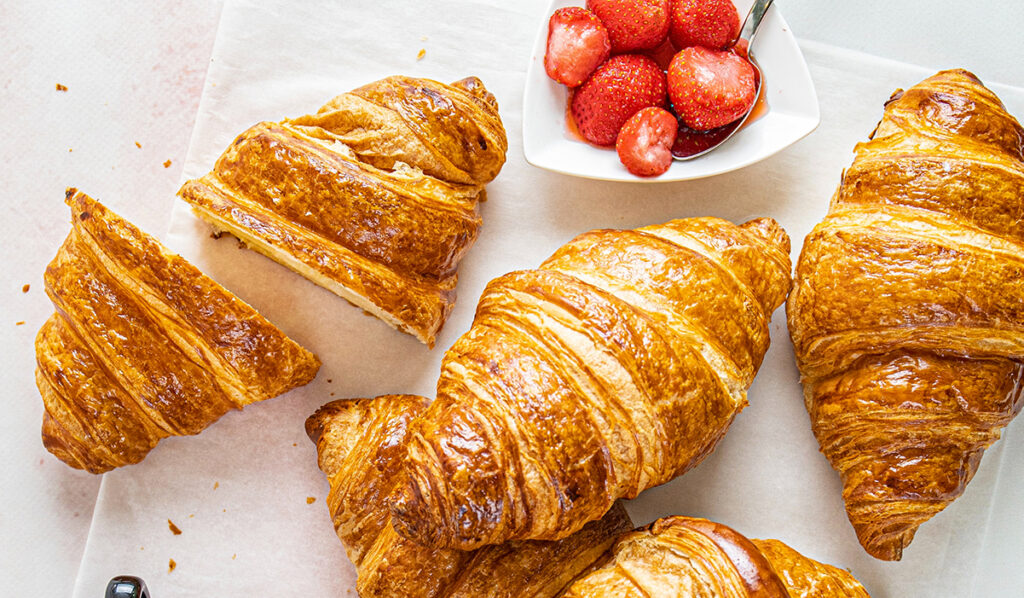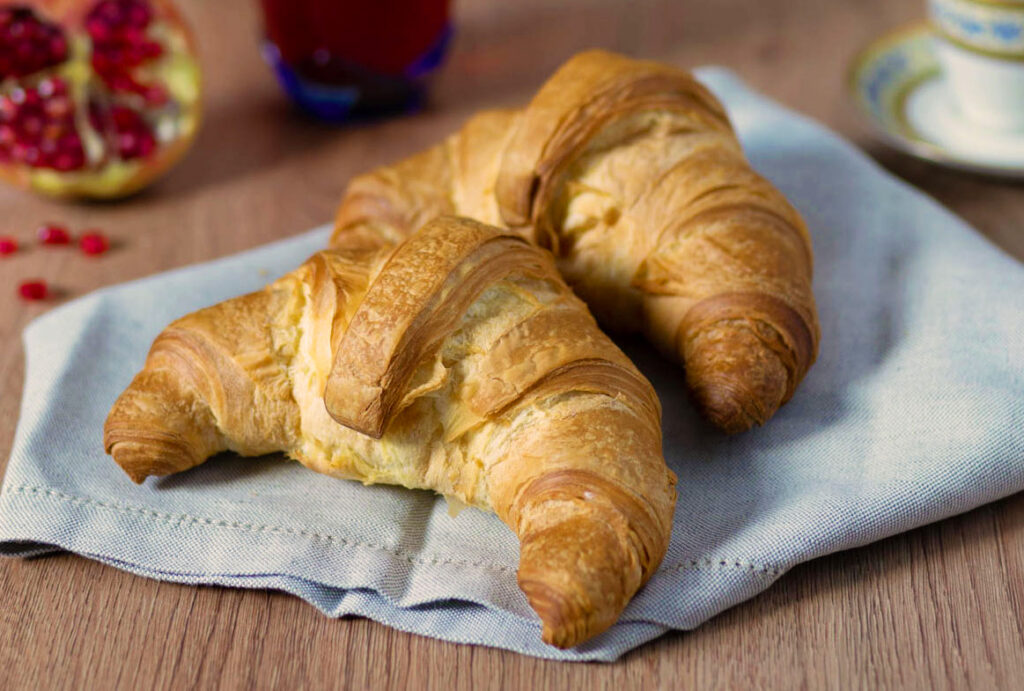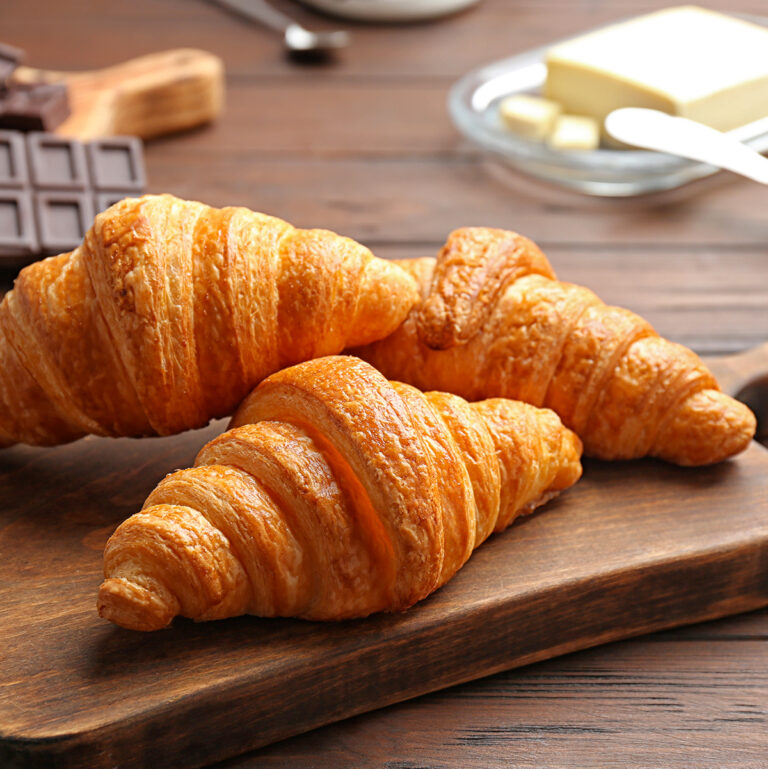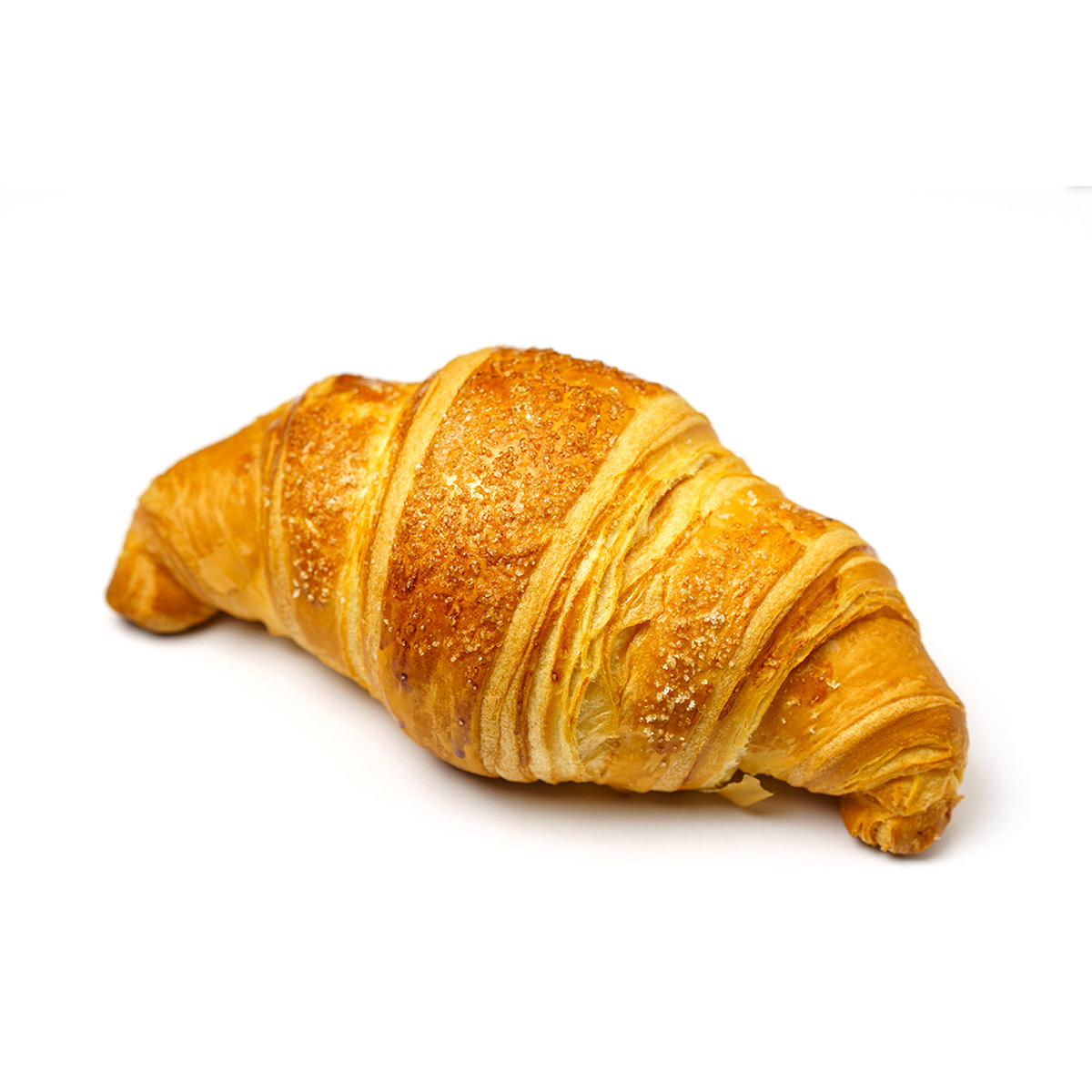Even though they are Italians’ favorite products for breakfast, these sweet and fragrant leavened products are often the subject of confusion. Brioche, croissant and croissant are not synonymous but refer to specific preparations, each with a specific history and recipe. Let’s find out what the differences and origins of each are.
Among the most requested Igloo products you will find the Italian-style Cornetto, a frozen product made with quality ingredients, stable in cooking, artisanal in appearance and taste, available in different fillings. Discover the Cornetteria Product Line.
A little bit of history
The first traces of the spread of the cornetto in Italy date back to 1683 during trade between the Republic of Venice and Vienna. Although many argue that the French croissant was born before the Italian croissant, it is certain that the typical French dessert is the result of the marriage between Louis XVI and Marie Antoinette of Austria which took place in 1770, practically a century later. In Italy the skill of Venetian master bakers and bread makers allowed the improvement of the Austrian recipe into what later became known as the croissant.
This is demonstrated by the fact that in France the croissant is also known by the term viennoiserie, which identifies a leavened baked product made from puff pastry. The croissant was then officially born around 1838 with the opening of the Boulangerie Viennoise in Paris, while the lexical term was introduced for the first time in the Dictionnaire de la langue française in 1863.
Brioche was born in Normandy in the 16th century, an adaptation and reinterpretation of the pâte à brioche dough from the medieval era. The shape of the brioche is different from croissants and croissants, in fact it is rounded and often has a ball of dough on the surface.
What’s the difference?
The croissant differs from the Italian cornetto in the type of ingredients chosen, in fact it does not involve the use of eggs in the dough, used only sometimes to brush the surface before cooking. It also has the lower amount of sugar and butter which makes the croissant crispier, lighter and crumblier. Butter is the ingredient that is most noticeable when tasting the croissant.

The shape is also different, in fact once the dough is rolled, the croissant remains straight while the croissant has the tips curved towards the center. Initially, French croissants did not include fillings and, having a neutral taste, croissants are perfect for filling with savory fillings.
The cornetto, the king of the Italian breakfast, differs from the croissant in its shape with the tips curved towards the centre, in the use of eggs and in the greater quantity of sugar and butter which make it tastier.

Another difference concerns the honeycomb: even if both preparations are flaky, the honeycomb of the Italian croissant is smaller and more compact while that of the flaky croissants is wider and more evident.
The croissant is served plain or can be enriched with aromatic pastes and fillings such as spreads, jams, fresh creams, etc.
The croissant is often mistakenly called brioche, especially in Northern Italy.
Finally, brioche looks like a small rounded sandwich made with eggs, abundant quantities of butter and sugar and leavening which creates, after cooking, a crunchy crust and a very soft centre.

In Italy, a scoop of dough is often added on top of the base to create the famous brioscia col tuppo. Typical of Sicilian pastry, it takes its name from the typical hair hairstyle in Sicily, the tuppo.
The brioche is filled like a croissant and in Sicily it is served with ice cream or granita.



